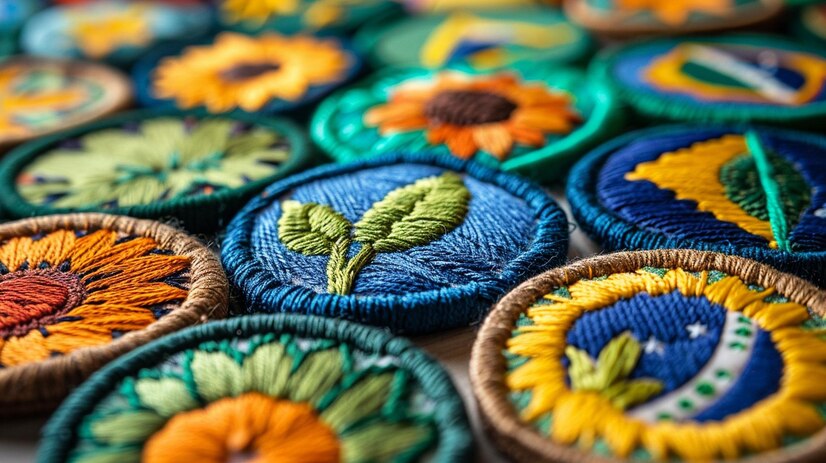
Embroidery patches are little works of art that you can stick on your clothes and accessories to make them totally unique. There are tons of different kinds to choose from, so it can be a bit overwhelming.
In this article, we’ll break down the different types of embroidery patches, what they’re good for, how to pick the perfect one for your style and the difference between embroidery and patches.
1. Plastic-Backed Patches:
-
Pros: Sturdy, durable, and thin patches featuring a plastic base.
-
Cons: Might not be as flexible as other patches.
2. PVC Patches:
Waterproof, durable, and customizable patches made from plastic.
-
Pros: Waterproof, durable, and comes in many colors and styles (even 3D!).
-
Cons: Looks a bit different from regular embroidered patches.
3. Name Patches
They’re an awesome way to give your brand or products some character. Ideal for businesses wanting an easy and budget-friendly option to achieve a consistent style.
Pros:
-
Cost-effective
-
Ideal for workplace identification
Cons:
-
Limited design complexity
4. Printed Patches
They’re a fantastic way to add some flair to your brand or products. Perfect for businesses looking for a simple and cost-effective way to keep things looking cohesive.
They’re ideal for quick projects needing high detail, like custom t-shirts, offering affordability and speedy delivery.
Pros:
-
Highly detailed and precise designs
-
Suitable for complex images and tight deadlines
Cons:
-
Less textured than embroidered patches
5. Woven Patches
If you want to showcase intricate details in your logo, custom woven patches are perfect. Their tight weave ensures even the smallest letters stand out, making them ideal for precise text. These patches use thinner threads like embroidery but offer more flexibility for detailed designs, making them a versatile choice.
Pros:
-
Detailed and intricate designs
-
Smooth texture
Cons:
-
Lack the raised texture of embroidered patches
6. Sew-On Patches
Sew-on patches feature visible threads on the back and are designed for direct stitching onto clothing or fabric. Being lightweight and flexible, they ensure durability for extended use and easy bulk storage.
Pros:
-
Durable and long-lasting
-
Flexible and easy to store
Cons:
-
Requires sewing, which can be time-consuming
7. Embroidered Patches
Want your designs to pop? Embroidered patches are the way to go. They’ve got that cool, textured look and come in a ton of colors so you can match any design. Plus, they’re affordable and quick to make.
Pros:
-
Rich texture and depth
-
Wide range of thread colors
Cons:
-
Less detail compared to printed or woven patches
9. Chenille Patches
Custom chenille patches are back in style for their cozy, wooly feel. They’re great for simple designs and lettering, perfect on warm caps, socks, and sweaters. These patches are also popular on varsity jackets, giving them a classic and textured look.
Pros:
-
Vibrant and whimsical appearance
-
Classic, textured look
Cons:
-
Less detail compared to other types
10. Leather Patches
Embroidered leather patches are embossed or printed leather pieces that can be added to jackets, hats, bags, and other items.
They offer a stylish and refined look and come in both real and synthetic leather varieties.
Pros:
-
Versatile and stylish
-
Available in genuine and faux leather
Cons:
-
More expensive than some other types
Difference Between Embroidery and Patches
Final Words
Make a statement with a custom patch that represents you. No matter, if you’re a fan showing support, a business owner looking to stand out, or just someone who loves to show good presentation, quality embroidery patches are your best bet.
When adding a patch to a military uniform, sports jersey, or club jacket, consider factors like cost, materials, durability, and comfort.
Embroidery patches do more than just add flair. They’re a powerful way to personalize your gear or leave a lasting impression with your brand. Choose high-quality patches to ensure your message is always on point!
FAQs
1. What is the strongest type of patch?
Leather patches are the strongest. They’re tough and last a long time.